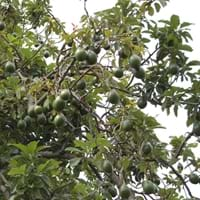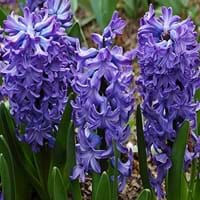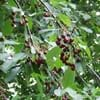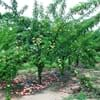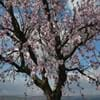Life Span
Perennial
Perennial
Type
Fruit
Bulb or Corm or Tuber
Origin
Central America, South America
Mediterranean, Western Asia
Types
Not Available
Not Available
Habitat
Subtropical climates
Mediterranean region
USDA Hardiness Zone
10-15
4-9
Sunset Zone
Not Available
21,22
Habit
Spreading
Clump-Forming
Flower Color
White, Yellow
White, Yellow, Red, Blue, Purple, Pink, Lavender, Violet
Flower Color Modifier
Bicolor
Bicolor
Fruit Color
Green
Not Available
Leaf Color in Spring
Dark Green
Green
Leaf Color in Summer
Dark Green
Light Green
Leaf Color in Fall
Dark Green
Several shades of Green
Leaf Color in Winter
Light Green
Light Green
Leaf Shape
Oval
Long slender
Plant Season
Spring, Summer, Fall, Winter
Spring, Winter
Sunlight
Full Sun
Full Sun, Partial Sun
Growth Rate
Medium
Medium
Type of Soil
Clay, Loam, Sand
Loam
The pH of Soil
Acidic, Neutral, Alkaline
Acidic, Neutral
Soil Drainage
Well drained
Well drained
Bloom Time
Early Spring, Spring, Winter, Late Winter
Early Spring, Spring, Late Winter, Indeterminate
Tolerances
Drought
Black Walnut Toxicity, Rabbit, Shade areas
Where to Plant?
Ground, Pot
Container, Ground, Pot
How to Plant?
Seedlings, Stem Cutting
chipping, Offsets, scooping, Twin scaling, Vegetative
Plant Maintenance
Medium
Low
Watering Requirements
Average Water Needs
Medium
In Summer
Lots of watering
Lots of watering
In Spring
Moderate
Moderate
In Winter
Average Water
Average Water
Soil pH
Acidic, Neutral, Alkaline
Acidic, Neutral
Soil Type
Clay, Loam, Sand
Loam
Soil Drainage Capacity
Well drained
Well drained
Sun Exposure
Full Sun
Full Sun, Partial Sun
Pruning
Remove damaged leaves, Remove dead branches, Remove dead leaves
Remove damaged leaves, Remove dead branches, Remove dead leaves
Fertilizers
All-Purpose Liquid Fertilizer
All-Purpose Liquid Fertilizer, General garden fertilizer, Time release fertilizer
Pests and Diseases
Bacterial Diseases, Dry root rot, Fungal Diseases, Red blotch
Pests and diseases free
Plant Tolerance
Drought
Black Walnut Toxicity, Rabbit, Shade areas
Flowers
Insignificant
Showy
Flower Petal Number
Single
Single, Double, Semi-Double
Foliage Texture
Coarse
Medium
Foliage Sheen
Glossy
Glossy
Attracts
Not Available
Insects
Allergy
Oral Allergy
Asthma
Aesthetic Uses
Not Used For Aesthetic Purpose
Beautification, Bouquets, Cottage Garden, Landscape Designing, Showy Purposes
Beauty Benefits
Anti-ageing, Good for the Scalp, Natural Sunscreen, Promotes healthy skin, Removes dandruff
Not Available
Environmental Uses
Air purification
Not Available
Medicinal Uses
Antidepressant, Detoxification, Digestive, Improve heart health, osteoporosis
Not Available
Part of Plant Used
Fruits
Flowers
Other Uses
Food for animals, Used as a nutritious food item, Used for its medicinal properties
Decoration Purposes, Showy Purposes
Used As Indoor Plant
Yes
Yes
Used As Outdoor Plant
Yes
Yes
Garden Design
Edible, Fruit / Fruit Tree, Shade Trees, Street Trees, Topiary / Bonsai / Espalier, Tropical
Bedding Plant, Container, Cutflower, Mixed Border, Rock Garden / Wall
Botanical Name
PERSEA americana 'Reed'( Guatemalan Strain)
Hyacinthus orientalis
Common Name
Avocado, Guatemalan Avocado
Hyacinth, common hyacinth, garden hyacinth, dutch hyacinth
In Hindi
एवोकाडो
ह्यचीन्थ
In German
Avocado
Hyazinthe
In French
Avocat
jacinthe
In Spanish
Aguacate
jacinto
In Greek
Αβοκάντο
υάκινθος
In Portuguese
Abacate
jacinto
In Polish
Awokado
hiacynt
In Latin
Avocado
et hyacinthinas,
Phylum
Magnoliophyta
Magnoliophyta
Class
Magnoliopsida
Liliopsida
Family
Lauraceae
Liliaceae
Clade
Angiosperms, Magnoliids
Angiosperms, Monocots
Tribe
Not Available
Not Available
Subfamily
Not Available
Scilloideae
Number of Species
Not Available
Season and Care of Avocado and Hyacinth
Season and care of Avocado and Hyacinth is important to know. While considering everything about Avocado and Hyacinth Care, growing season is an essential factor. Avocado season is Spring, Summer, Fall and Winter and Hyacinth season is Spring, Summer, Fall and Winter. The type of soil for Avocado is Clay, Loam, Sand and for Hyacinth is Loam while the PH of soil for Avocado is Acidic, Neutral, Alkaline and for Hyacinth is Acidic, Neutral.
Avocado and Hyacinth Physical Information
Avocado and Hyacinth physical information is very important for comparison. Avocado height is 460.00 cm and width 460.00 cm whereas Hyacinth height is 10.20 cm and width 5.10 cm. The color specification of Avocado and Hyacinth are as follows:
Avocado flower color: White and Yellow
Avocado leaf color: Dark Green
Hyacinth flower color: White, Yellow, Red, Blue, Purple, Pink, Lavender and Violet
- Hyacinth leaf color: Green
Care of Avocado and Hyacinth
Care of Avocado and Hyacinth include pruning, fertilizers, watering etc. Avocado pruning is done Remove damaged leaves, Remove dead branches and Remove dead leaves and Hyacinth pruning is done Remove damaged leaves, Remove dead branches and Remove dead leaves. In summer Avocado needs Lots of watering and in winter, it needs Average Water. Whereas, in summer Hyacinth needs Lots of watering and in winter, it needs Average Water.
